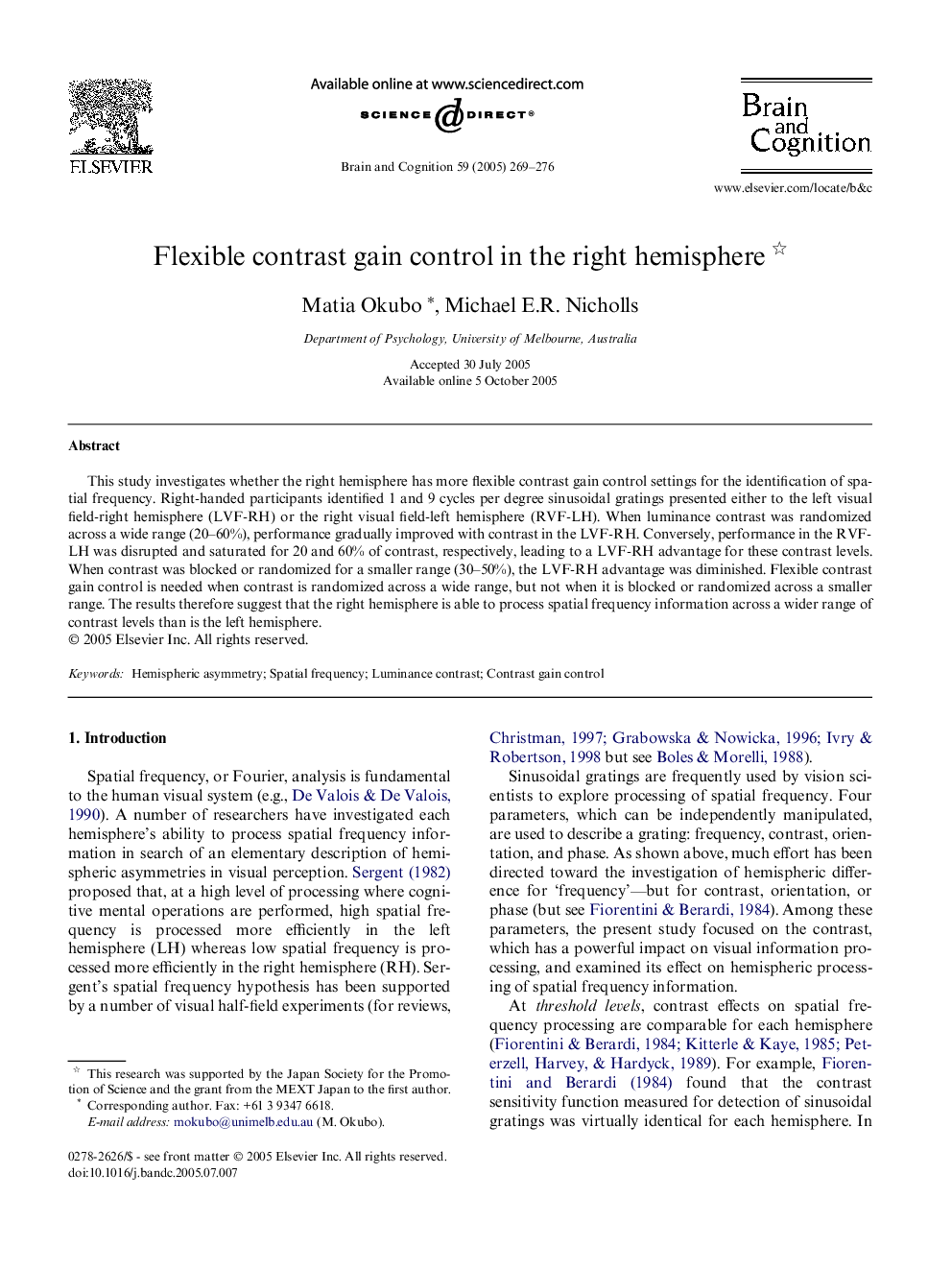| Article ID | Journal | Published Year | Pages | File Type |
|---|---|---|---|---|
| 10455592 | Brain and Cognition | 2005 | 8 Pages |
Abstract
This study investigates whether the right hemisphere has more flexible contrast gain control settings for the identification of spatial frequency. Right-handed participants identified 1 and 9 cycles per degree sinusoidal gratings presented either to the left visual field-right hemisphere (LVF-RH) or the right visual field-left hemisphere (RVF-LH). When luminance contrast was randomized across a wide range (20-60%), performance gradually improved with contrast in the LVF-RH. Conversely, performance in the RVF-LH was disrupted and saturated for 20 and 60% of contrast, respectively, leading to a LVF-RH advantage for these contrast levels. When contrast was blocked or randomized for a smaller range (30-50%), the LVF-RH advantage was diminished. Flexible contrast gain control is needed when contrast is randomized across a wide range, but not when it is blocked or randomized across a smaller range. The results therefore suggest that the right hemisphere is able to process spatial frequency information across a wider range of contrast levels than is the left hemisphere.
Related Topics
Life Sciences
Neuroscience
Cognitive Neuroscience
Authors
Matia Okubo, Michael E.R. Nicholls,
